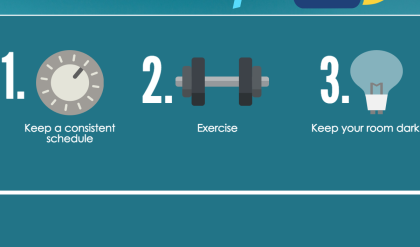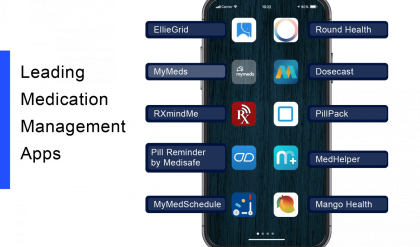
Find the Best Telehealth Services for Your Needs: A Journey to Virtual Wellness
The digital revolution has profoundly impacted healthcare, ushering in an era of convenient, accessible, and often more affordable care: telehealth. But with a burgeoning market of platforms and providers, navigating the landscape can feel overwhelming. This comprehensive guide will equip you with the knowledge and tools to find the perfect telehealth service tailored to your unique needs.
Beyond the Video Call: Understanding the Telehealth Spectrum
Telehealth isn’t just a video chat with a doctor. It encompasses a wide array of services, from simple virtual check-ins to complex chronic disease management. Consider these key aspects:
-
Specialty Focus: Are you seeking a general practitioner, a specialist (cardiologist, dermatologist, psychiatrist, etc.), or a niche provider (fertility specialist, sleep specialist)? Different platforms specialize in different areas.
-
Insurance Coverage: Confirm whether your insurance provider covers telehealth services and which platforms are in their network. Unexpected bills can quickly negate the cost savings.
-
Technology Requirements: While most services are accessible via smartphones or computers, ensure your device and internet connection meet the platform’s minimum requirements. Consider accessibility features for users with disabilities.
-
Communication Preferences: Do you prefer video calls, phone consultations, or asynchronous messaging (email, secure portal)? Some platforms offer a blend of options, catering to varying communication styles.
-
Cost and Payment Options: While some services are free or low-cost, others may charge consultation fees or require subscriptions. Explore payment plans and financing options if needed.
Decoding the Telehealth Landscape: A Comparative Look
Choosing the right telehealth platform requires careful consideration. Let’s explore a few popular categories and their strengths:
| Category | Strengths | Potential Drawbacks | Example Platforms (Illustrative – Not an Endorsement) |
|---|---|---|---|
| General Practitioners | Convenient access to primary care, often lower cost for routine visits | Limited access to specialized care, potential wait times | Teladoc, MDLIVE |
| Mental Health | Increased accessibility for therapy and counseling, often more affordable than in-person care | Privacy concerns, need for robust platform security features | Talkspace, BetterHelp |
| Specialized Care | Convenient access to specialists, reduces travel time and costs | May require higher fees, potential for longer wait times for appointments | Amwell (various specialties), Hims & Hers (specific areas) |
Beyond the Big Names: Discovering Hidden Gems
While large platforms offer convenience and scale, smaller, specialized telehealth providers may offer a more personalized experience. Consider searching for providers directly through your insurance network or by searching online for specialists in your area offering telehealth services.
Finding Your Perfect Match: A Step-by-Step Guide
-
Identify Your Needs: Define your healthcare requirements, including specialty, urgency, and preferred communication methods.
-
Check Insurance Coverage: Contact your insurance provider to understand your telehealth benefits and covered platforms.
-
Research Platforms: Explore different telehealth platforms, comparing features, specialties, costs, and user reviews.
-
Read Reviews: Look for reviews on third-party sites and social media to gauge user experiences.
-
Compare Pricing: Compare costs for consultations, subscriptions, and additional services.
-
Test the Waters: Many platforms offer free consultations or trials. Utilize these to assess the platform’s user-friendliness and compatibility with your needs.
The Future of Virtual Wellness: A Personalized Approach
Telehealth is constantly evolving, incorporating AI-powered diagnostic tools, wearable technology integration, and personalized treatment plans. The future promises a more seamless, proactive, and individualized approach to healthcare, empowering you to take control of your well-being. By carefully researching and selecting the right telehealth service, you can embark on a journey towards a healthier, more convenient, and potentially more affordable healthcare experience.

Additional Information
Finding the Best Telehealth Services: A Deeper Dive into Selection Criteria and Considerations
The proliferation of telehealth services presents consumers with a wealth of options, but navigating this landscape effectively requires a nuanced understanding beyond simply comparing price points. Effectively selecting a telehealth provider necessitates a multi-faceted analysis encompassing technological capabilities, provider qualifications, coverage limitations, privacy protocols, and personal needs.
1. Technological Capabilities and User Experience:
Beyond basic video conferencing, the technological infrastructure underlying telehealth services significantly impacts the quality of care. Consider the following:
- Platform Compatibility: Does the platform work seamlessly across different devices (smartphones, tablets, computers)? Poor compatibility can create friction and hinder access, particularly for patients with limited technological literacy. For example, a service relying solely on a dedicated app might exclude older patients who prefer using desktops.
- Data Security and Encryption: Robust security measures are paramount given the sensitive nature of medical information exchanged during telehealth consultations. Look for platforms adhering to HIPAA regulations (in the US) or equivalent international standards, explicitly detailing their security protocols. A recent study by the Ponemon Institute highlighted the increasing frequency and cost of data breaches in the healthcare sector, underscoring the importance of this factor.
- Integration with Existing Systems: Seamless integration with Electronic Health Records (EHRs) is crucial for efficient information exchange between providers. A service lacking this integration can lead to delays in diagnosis and treatment, impacting the overall efficiency of care.
- Accessibility Features: Consider the platform’s accessibility for patients with disabilities. Features like screen reader compatibility, adjustable font sizes, and closed captioning are critical for inclusive telehealth access.
2. Provider Qualifications and Specializations:
The qualifications and experience of the telehealth providers are equally critical. A simple search may reveal numerous providers, but a deeper investigation is needed:
- Board Certification and Licensing: Verify the provider’s licensing and board certifications in their respective state or country. This ensures they meet established professional standards. Websites like the American Board of Medical Specialties (ABMS) can be invaluable resources for verification.
- Specialization and Expertise: Different telehealth platforms cater to diverse specialties. Clarify whether the provider has the specific expertise required for your condition. For example, choosing a general practitioner for a complex cardiology issue might be inadequate.
- Patient Reviews and Ratings: While not a definitive measure, online reviews can offer insights into patient experiences with specific providers and platforms. However, treat reviews critically, considering potential biases and the sample size.
3. Coverage, Costs, and Reimbursement:
Financial considerations are paramount:
- Insurance Coverage: Confirm whether your health insurance plan covers telehealth services provided by the platform. Coverage may vary depending on the plan, the provider, and the type of service rendered. Contact your insurance provider to clarify coverage details before using the service.
- Out-of-Pocket Costs: Understand the costs associated with the service, including consultation fees, medication costs, and any additional charges for tests or procedures. Transparency in pricing is crucial.
- Reimbursement Processes: Investigate the platform’s reimbursement processes if you expect to be reimbursed by your insurance provider. A streamlined process can save you time and administrative hassle.
4. Privacy and Data Protection:
The handling of sensitive medical information requires rigorous attention to privacy:
- HIPAA Compliance (US): Confirm the platform’s compliance with the Health Insurance Portability and Accountability Act (HIPAA) or equivalent regulations. This ensures your protected health information (PHI) is handled responsibly and securely.
- Data Security Practices: Understand how the platform protects your data from unauthorized access, breaches, and misuse. Look for information about their data encryption, security protocols, and incident response plans.
- Data Ownership and Control: Clarify who owns and controls your data. You should have the right to access, correct, and delete your data as needed.
5. Case Study Example:
Consider a patient with chronic hypertension needing ongoing medication management. Choosing a telehealth platform specializing in cardiology with a licensed cardiologist, robust data security, and seamless integration with their existing EHR would provide superior care compared to a general telehealth platform lacking these features. The former minimizes risks associated with data breaches, ensures specialist care, and facilitates efficient medication adjustments based on regular monitoring.
In conclusion, selecting the “best” telehealth service requires a systematic evaluation across multiple dimensions. A superficial comparison based solely on price or convenience can be detrimental. By rigorously analyzing technological capabilities, provider credentials, financial implications, privacy protocols, and personal health needs, patients can make informed decisions that maximize the benefits and minimize the risks associated with telehealth utilization.






